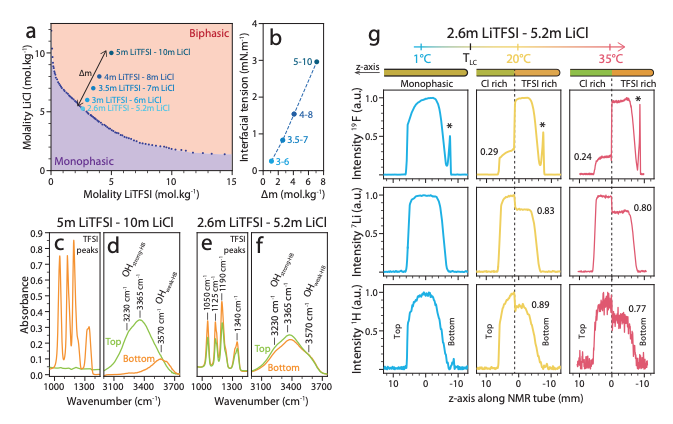Ask for a reprint
email :
* Give your email
2023
ACL
|
Damien Degoulange, Raj Pandya, Michael Deschamps, Dhyllan A.Skiba, Betar M.Gallant, Sylvain Gigan, Hilton B.de Aguiar, Alexis Grimaud, 'Direct imaging of micrometer-thick interfaces in salt–salt aqueous biphasic systems', Proc. Nat. Acad. Sci. U.S.A. 120 e2220662120 (2023) doi:10.1073/pnas.2220662120
Unlike the interface between two immiscible electrolyte solutions (ITIES) formed between water and polar solvents, molecular understanding of the liquid?liquid interface formed for aqueous biphasic systems (ABSs) is relatively limited and mostly relies on surface tension measurements and thermodynamic models. Here, high-resolution Raman imaging is used to provide spatial and chemical resolution of the interface of lithium chloride - lithium bis(trifluoromethanesulfonyl)imide - water (LiCl?LiTFSI?water) and HCl?LiTFSI?water, prototypical salt?salt ABSs found in a range of electrochemical applications. The concentration profiles of both TFSI anions and water are found to be sigmoidal thus not showing any signs of a positive adsorption for both salts and solvent. More striking, however, is the length at which the concentration profiles extend, ranging from 11 to 2 µm with increasing concentrations, compared to a few nanometers for ITIES. We thus reveal that unlike ITIES, salt?salt ABSs do not have a molecularly sharp interface but rather form an interphase with a gradual change of environment from one phase to the other. This knowledge represents a major stepping-stone in the understanding of aqueous interfaces, key for mastering ion or electron transfer dynamics in a wide range of biological and technological settings including novel battery technologies such as membraneless redox flow and dual-ion batteries.
|

|